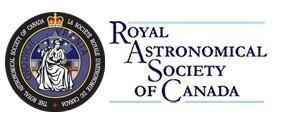Learn more about the Analemmatic Sundial below!
Visit RASC online for more information!
The Analemmatic Sundial
What is an Analemmatic Sundial?
The Sundial was the first human invention that does not just keep time, it “finds” time. Up to the 1840s, the Sundial was used for the time finding standard for hour candles, hourglasses, water clocks, and even for mechanical watches and clocks and for church bells calling the hours of services. The parts of the Sundial are very simple: a stick called the gnomon and a dial showing hour lines.
As opposed to a normal sundial, an Analemmatic Sundial simply corrects for the motion of the Earth as it travels in an ellipse, not a circle, around the Sun speeding up and slowing down over the course of the year. A regular sundial at any location will run up to 16 min fast in the spring and 15 min slow in the fall because the Earth’ rotation speeds up in the spring and slows down in the fall. The Analemmatic Sundial standardizes the Solar mean time at any Earth location so that high noon, as the point of highest sun elevation, is really noon!
Check out the brand new Analemmatic Sundial at Allan Brooks Nature located on the Grassland Trail near the pond!
Click here for more information about the History of the Sundial
How to use the Analemmatic Sundial
- First, step onto the platform with the gnomon stick.
- Center the gnomon stick at the correct month and day of the month by putting it into and sliding it along the north – south platform groove.
- Note the position of the shadow of the stick on the clock numbers and estimate the time as accurately as you can. (Also note that the length of this shadow would vary according to the angle of the sun at the various seasons).
- If we are now on Pacific Daylight Savings Time, add one hour to the time from the Sundial that you have noted to adjust from Pacific Standard Time.
- Again, look at the month and approximate day perpendicular to you on the platform. Then, note the minutes of correction on the platform’s analemma shape directly across horizontally and up to the top from where the gnomon stick is planted. (The maximum is 15 minutes slow or fast and the minimum is zero.)
- These minutes will be subtracted or added as minutes of correction from the Sundial time. But by using the Analemmatic Sundial with its elliptical dial, slow or fast correction minutes, and moving gnomen, you will have corrected for these time of year differences caused by the Earth’s slowing and speeding in its orbit around the Sun.
- You should now have a “found” time from the Sundial which will match your cell phone or watch time.


Acknowledgements go out to the Allan Brooks Nature Centre for hosting this Sundial, to the Foord Family Foundation for funding it, to the glass mosaic artist Connie Vetter-Johnson for creating the number stones and to the members of the Royal Astronomical Society of Canada – Okanagan Centre for building it.
